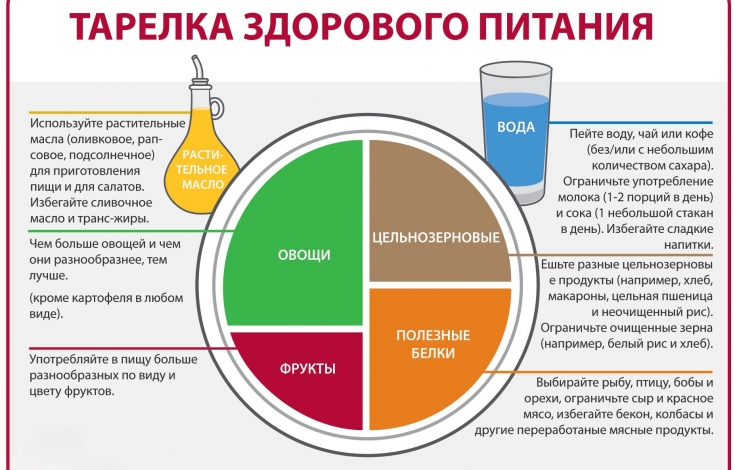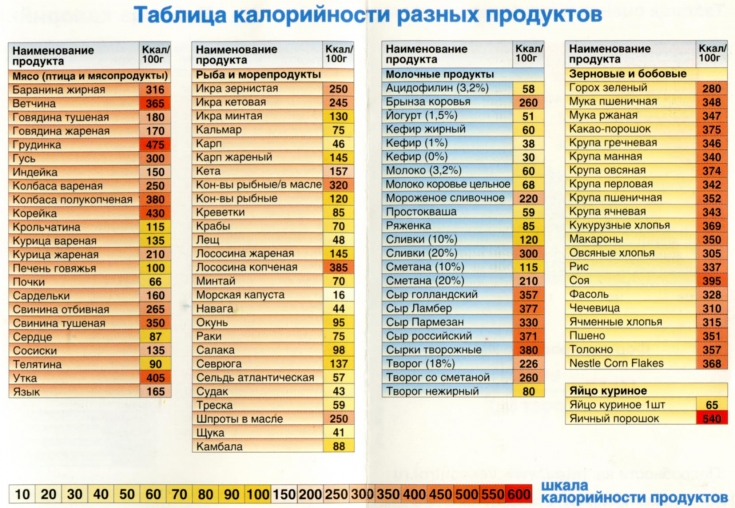Fundamentals of proper nutrition – this is something that every person in the modern world should know. All of us are already affected by stress, bad ecology, bad habits, etc., and thanks to proper healthy nutrition you can not only keep your body in shape, but also significantly improve the quality of life.
"You are what you eat." is a well-known phrase of Hippocrates, which in the modern world makes even more sense than before.
Today, estet-portal.com spoke with nutritionist Oksana Skitalinskaya about what to eat, what diseases are caused by improper nutrition and whether there is a need to count calories.
What vitamins/fats/berries to use for good digestion
Good digestion is based on a balanced diet, where there is also a "building material"; for the formation and operation of cells, and an energy substrate, and auxiliary components or cofactors of various biochemical reactions: proteins, fats, vitamins, minerals, phytonutrients, fiber. They are best obtained with a varied diet.
All of these macro and micronutrients first "feed" our huge inner microcosm - the intestinal microbiota, which ensures the integrity of the intestinal epithelium and its protective functions, synthesize vitamins, and special valuable substances - SCFA (short-chain fatty acids), helps to digest and assimilate food.
Good digestion — it's not just "normal" well-being, but the full functioning of the nervous system, high stress resistance of the body, low level of systemic inflammation and the risk of developing so-called age-related diseases.
Such as:
• diabetes mellitus type 2;
• atherosclerosis;
• hypertensionand;
• metabolic syndrome;
• oncological diseases;
• neurodegenerative diseases.
To be more precise, you should focus on the Healthy Eating Plate.
Which:
• half of the "plate" occupied by vegetables, fruits and berries, moreover, there are twice as many vegetables;
• a quarter - protein products (eggs, fish, seafood, low-fat poultry, sour-milk, mushrooms, legumes, nuts, seeds);
• a quarter - quality whole grains (buckwheat, brown rice, etc.).
In addition, it is important to regularly consume foods that have prebiotic properties, that is, selectively nourish the beneficial intestinal microflora.
Prebiotics include:
• raw Jerusalem artichoke;
• leaves and roots of chicory and dandelion.
No less important are fermented foods: pickled vegetables and drinks (cabbage, kimchi, kombucha).
Omega-3 fats are also important in the diet, as they have a positive effect on the function of intestinal epithelial cell membranes: flax seeds, chia, and nuts, fatty sea fish, omega-3 capsules.
A diabetic's menu is different from a healthy menu for an ordinary person or not
First, let me remind you that there are two types of diabetes (DM).
First type – insulin dependent. It develops, as a rule, in young people, has autoimmune, viral, genetic causes.
Second type – insulin independent. The most common, associated with malnutrition.
Therefore, we will talk about type 2 diabetes with preserved function of the pancreatic insular apparatus (without insulin injections).
If an ordinary and yet healthy person eats the way most people eat refined, fatty, sweet food, then, yes, it is different.
But if a person adheres to the principles of nutrition aimed at slowing down the aging process, inflammation in the body, then such nutrition is very similar to nutrition for diabetics.
Why?
The first, very important condition in the nutrition of type 2 diabetes should be a strong restriction of simple carbohydrates (glucose, fructose and galactose), the excess of which impairs tissue sensitivity to insulin, leads to fatty infiltration of the liver, disrupts functioning tissues sensitive to insulin (the epithelium of the lens, peripheral nerves, kidneys, erythrocytes, aorta, retinal vessels, islets of Langerhans in the pancreas).
The second point is - control over the quality and quantity of fats: saturated fats should be reduced (as a rule, replace fried foods with boiled ones). And healthy fats: butter, cream, olive oil, nuts, flax seeds, coconut, avocado, oily sea fish, egg yolks - increase.
The third condition is - the presence of a sufficient amount of fiber, which accelerates the transport of food contents and reduces the rate of absorption of carbohydrates.
For example:
• fresh and al dente cooked vegetables;
• leafy greens;
• citrus fruits in small quantities and berries;
• buckwheat, pearl barley and brown rice.
Fourth point - high-quality protein for normal liver function (eggs, lean boiled meats, fish, seafood, goat cheese, well-cooked legumes, mushrooms).
Fifth - diet rich in B, C and E vitamins. Their functions are diverse: they reduce fatty infiltration of the liver, neuropathy, increase the resistance of tissues to hypoxia, improve blood microcirculation in small vessels, the synthesis of glutathione, which is responsible for the detoxification function of the liver.
Foods rich in B vitamins:
• dry brewer's yeast;
• boiled/stewed chicken liver and heart;
• fish;
• squid;
• eggs;
• hard cheeses.
Vitamin C:
• rosehip infusion;
• parsley;
• fresh and sauerkraut;
• green onion;
• currant, etc.
Meal regimen: 3 times a day. It helps to reduce insulin resistance and increases the sensitivity of tissues to insulin.
Must be combined with walking to enhance the effect.
Is it correct to count calories
It is not necessary to carefully count calories, but you need to roughly navigate the calorie content of certain foods.
To do this, it is enough to know three categories of products with different caloric content:
• the first, most dangerous — sweets;
• the second is fatty foods;
• the third is refined products.
Sweets, confectionery, fried foods, sausages, fine flour bread, even dark bread, instant cereals, sweet drinks, nectars and fruit juices - these products should be limited as much as possible, and it is better to exclude them altogether.
But if you're overweight or having trouble losing weight, it's important to roughly calculate each meal by calories, because 80% of people underestimate their calorie intake and tend to overeat.
Because an extra piece of fatty Brie or Camembert cheese, not taken into account, or seasoned with even very healthy olive oil "by eye"
Why fast carbs are so dangerous
In fact, if you eat one candy, nothing will happen to you. The pancreas will produce the hormone insulin, which transports glucose molecules to the muscles and liver, if you eat more than one and do not move, then also to adipose tissue.
If sweets and flour products are often in your diet, then the risk of disrupting your metabolism increases.
After all, even in healthy people, 30% of glucose is converted into fat.
Glucose (which is also converted into excess fructose and galactose) disrupts the sensitivity of cells to insulin, causes the deposition of fat in the liver, has a glucose toxic effect on insulin-sensitive tissues and leads to a gradual disruption of their functions — disruption of blood vessels (angiopathies), nerves (neuropathies), cataracts.
But this process is gradual, imperceptible, and practically unmanifested.
More obvious are weight gain, obesity, hepatic and pancreatic steatosis, hypertension and then metabolic syndrome, accelerated aging and ultimately shortened life expectancy.
Questions for a nutritionist: how to eat right so that it brings pleasure
You might be interested in: Abs Workouts.










Add a comment